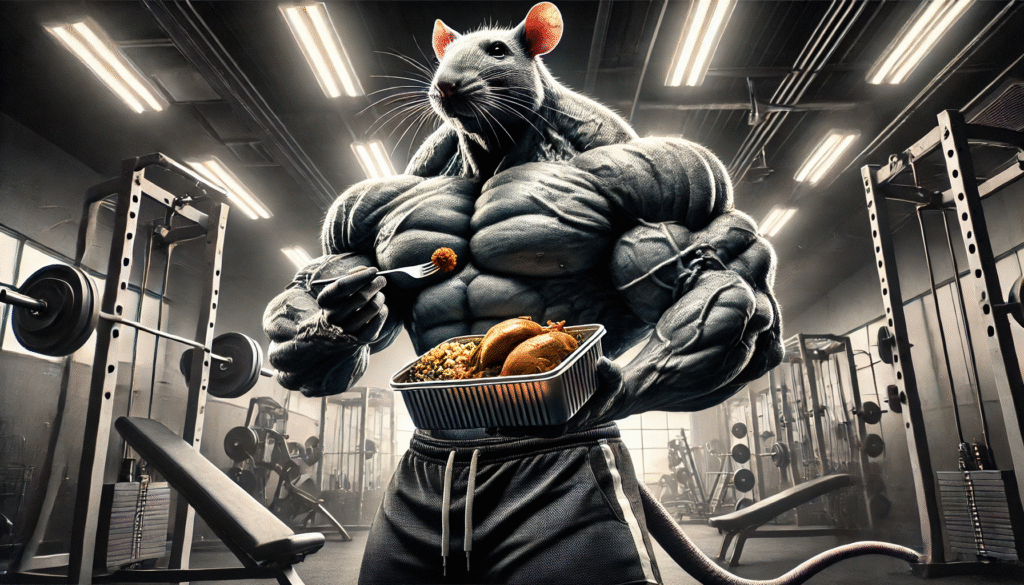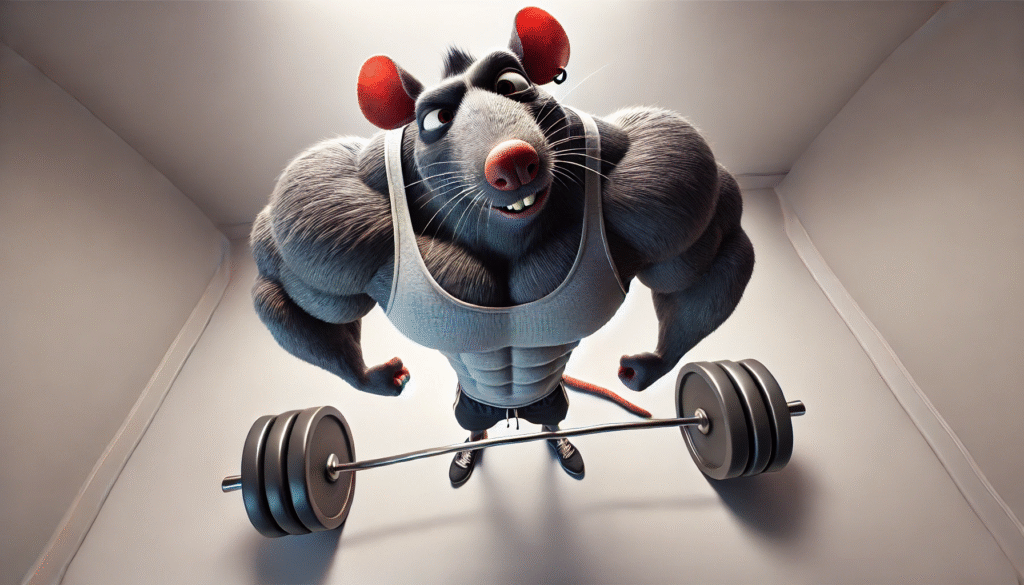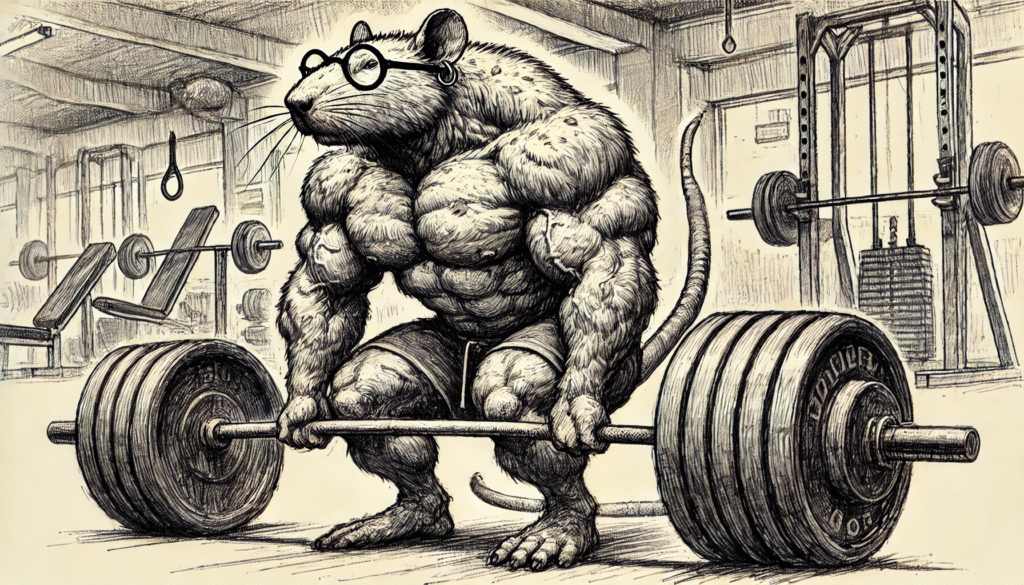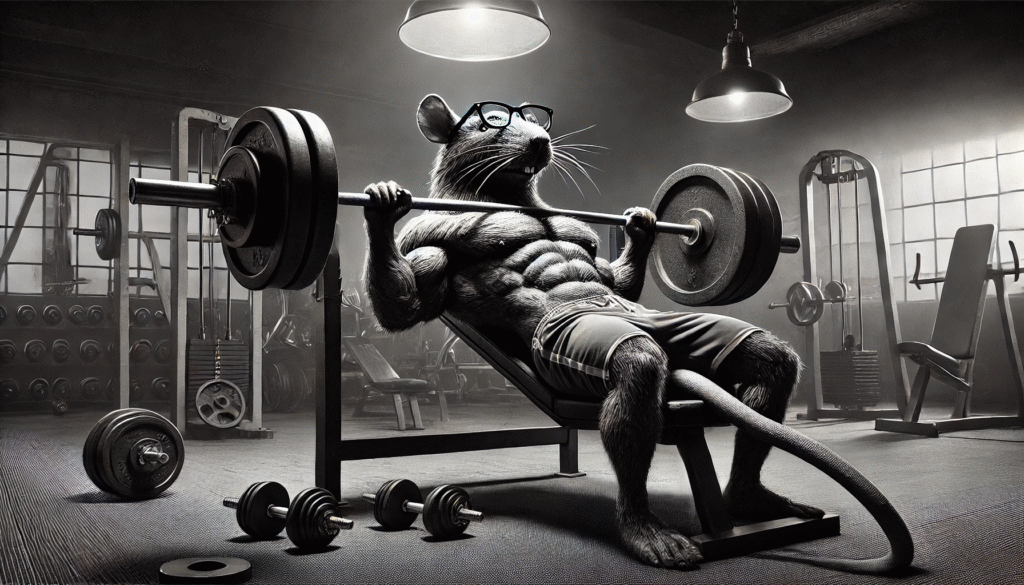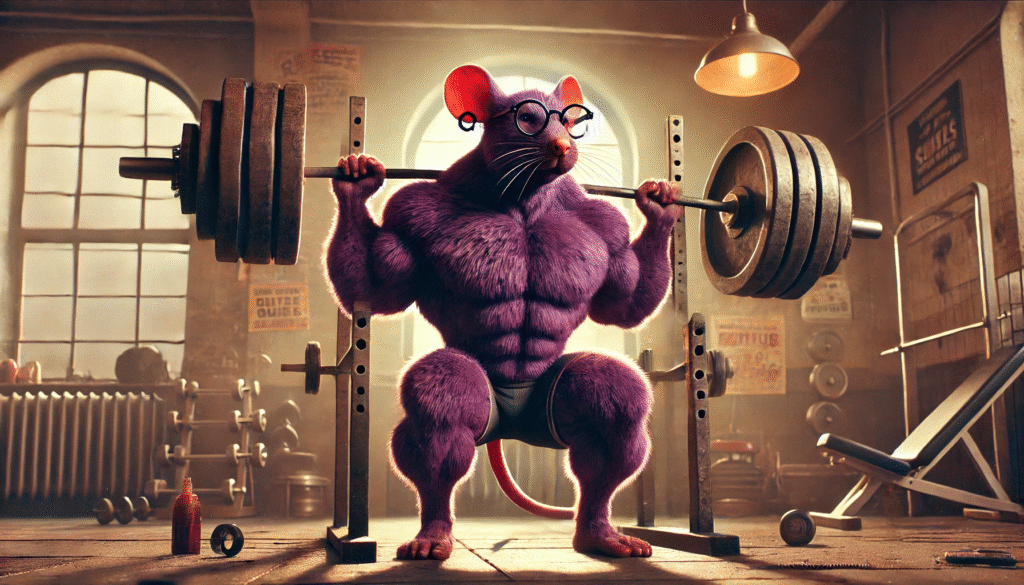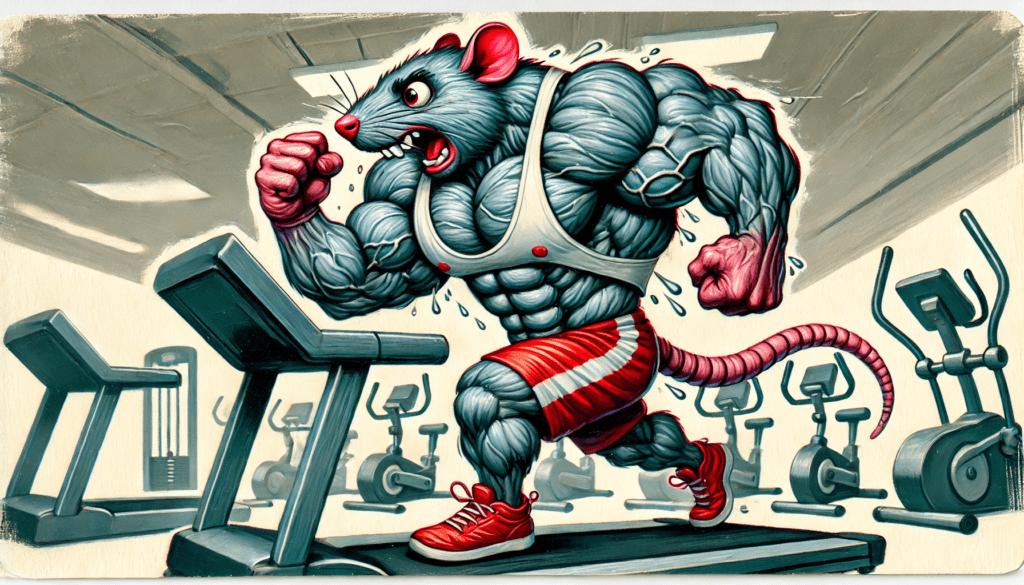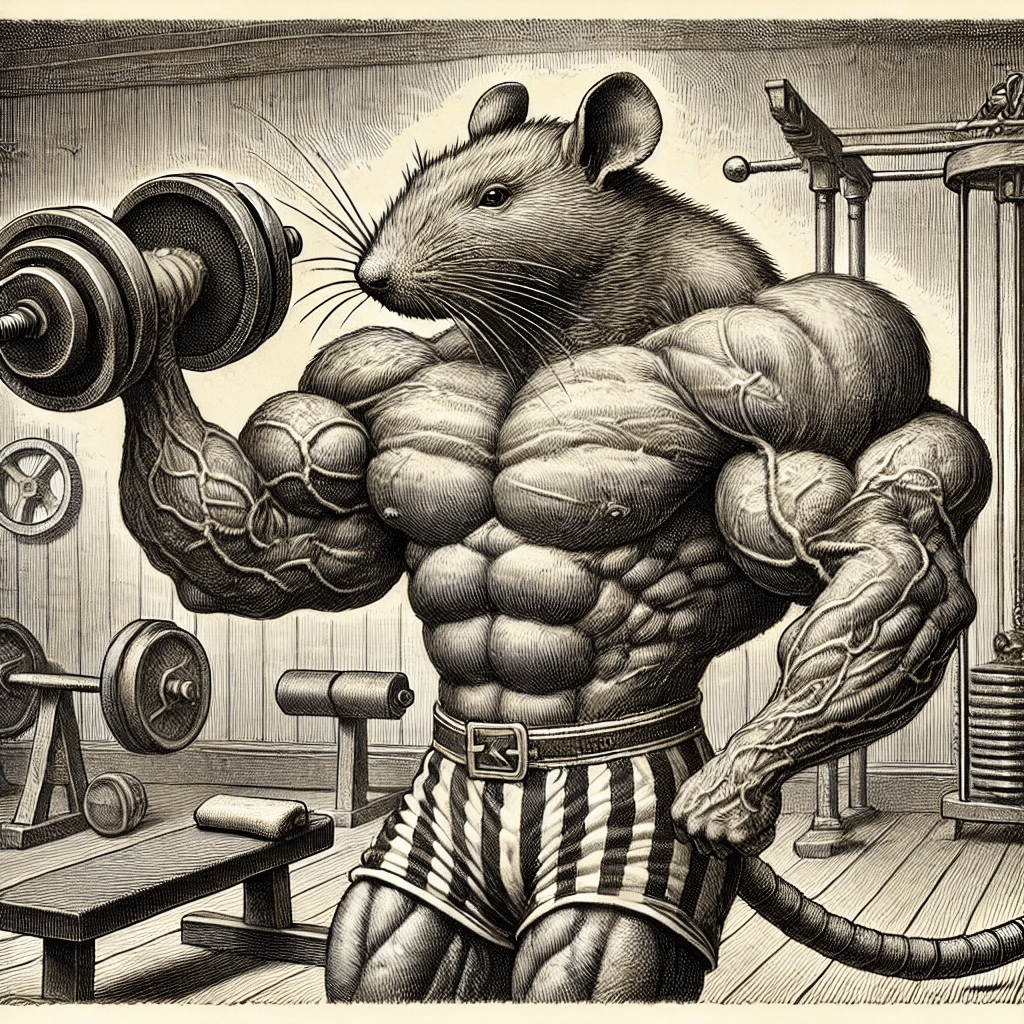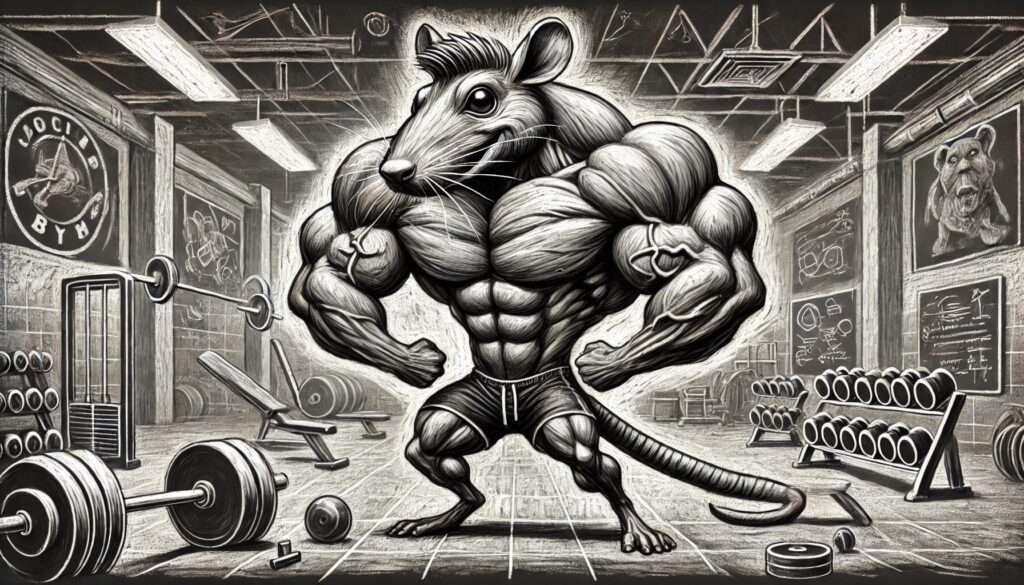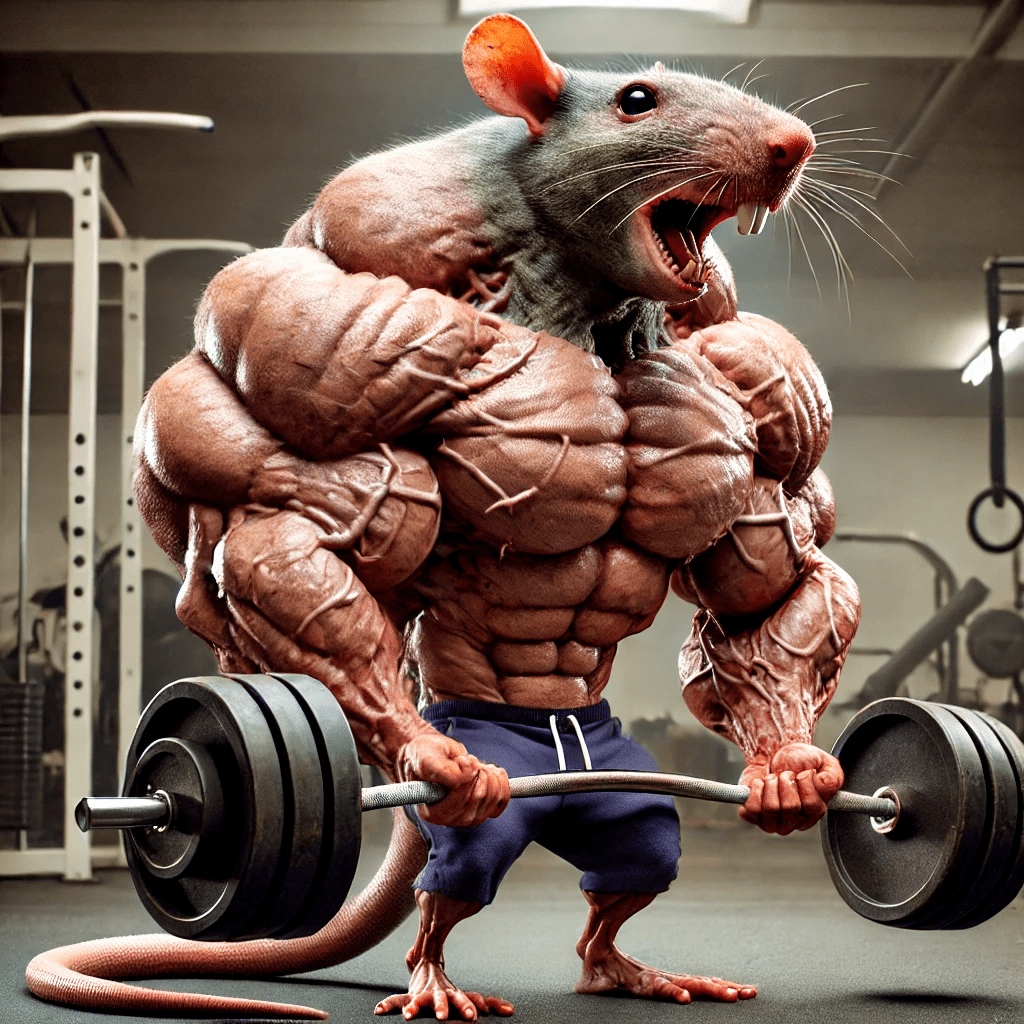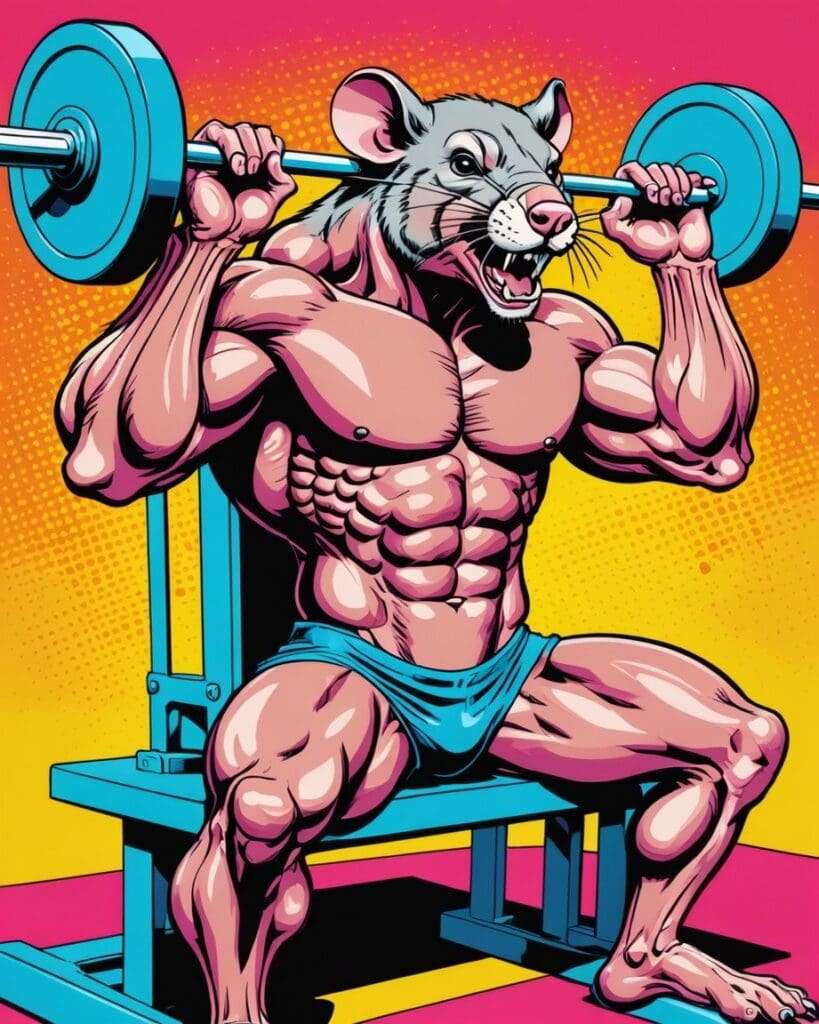Workout Routines For The Jungle Gym……
Working out doesn’t always have to happen in a crowded gym or with fancy machines. In fact, the jungle gym at your local park offers everything you need for a full-body challenge. With just your body and some creativity, you can unlock new ways to move, build strength, and enjoy fresh air—all while making use of outdoor fitness spaces.
One of the best ways to train using the jungle gym is through a calisthenics workout routine. Calisthenics uses your own body weight for resistance, making it perfect for all fitness levels. Whether you’re doing pull-ups, dips, or leg raises, these movements target multiple muscle groups and build functional strength without needing a single dumbbell.
If you’re looking for new and exciting workout routines for your outdoor sessions, this guide is for you. You’ll learn how to turn the playground into your personal gym, with routines for beginners, intermediate users, and advanced athletes. With structure, progression, and the right exercises, you can transform the jungle gym into the ultimate training zone.

Unlocking the Power of the Jungle Gym.
Understanding the Appeal of Outdoor Workouts.
Exercising outside feels different than being in a gym. You get fresh air, sunshine, and space to move. Many people enjoy the feeling of freedom that outdoor workouts bring. It’s fun, and you don’t have to wait in line for machines. This is why more people are choosing workout routines for parks and outdoor spaces.
Nature adds something special to your workout. Birds chirping and trees swaying can make you feel calm and focused. When you’re outside, time passes quickly, and workouts feel less like a chore. Using the jungle gym in a park is a smart way to build strength while enjoying the outdoors. The fresh setting makes fitness feel more like play.
Another great thing is that it’s free. You don’t need a gym membership to use a public park. With a little creativity, you can do full-body workouts on basic equipment. Many parks have the jungle gym, benches, and bars that are perfect for training. This makes it easy to get strong without spending a lot of money.
Lastly, being outdoors helps your mind as much as your body. You can reduce stress, boost your mood, and feel more focused. Moving outside gives you a break from screens and walls. That’s why workout routines for the outdoors can help you feel healthier and happier overall.
Overview of Using a Jungle Gym for Fitness.
At first, the jungle gym might just look like a playground. But with the right moves, it turns into a powerful training space. You can do pull-ups on the bars, step-ups on benches, and dips using parallel bars. This setup lets you target almost every part of your body.
Each part of the jungle gym serves a different purpose. The monkey bars work your upper body and grip strength. Low bars are great for rows and bodyweight squats. Even the ground near the gym can be used for core work like planks or mountain climbers. The variety makes it perfect for creative workout routines for all levels.
No matter your skill, you can find an exercise that works. Beginners can start with modified movements like assisted push-ups. More advanced athletes can try tougher skills like pull-up holds or muscle-ups. The equipment stays the same, but how you use it can grow with you. This is why it’s perfect for a calisthenics workout routine.
You also don’t need much gear. Just wear comfy clothes, good shoes, and maybe bring a towel. Some people use gloves for better grip. With just these basics, the jungle gym becomes your personal outdoor gym. It’s simple, but it can be one of the most effective places to train.
Benefits of Calisthenics Workout Routines in Nature.
Doing a calisthenics workout routine outside comes with big benefits. First, you use your own body to build strength. This means you don’t need weights or machines. Exercises like pull-ups, push-ups, and leg raises help you gain muscle and stay lean at the same time.
Being in nature also helps you breathe better. Your lungs get clean air, and your body feels refreshed. You’re not stuck in a noisy, crowded space. Training outside can improve your mood and lower stress levels. That’s why workout routines for the outdoors help both the body and the mind.
You also get natural variety. Uneven ground, bar height, and space all make your body work in new ways. These small changes help your muscles grow stronger and improve balance. The jungle gym offers many tools in one space, which keeps your workouts interesting and challenging.
Lastly, outdoor calisthenics helps you stay consistent. You can train in parks near your home, school, or job. When workouts are easy to start and fun to do, you’re more likely to keep going. That’s how a calisthenics workout routine turns into a lasting fitness habit, not just a short-term plan.
Calisthenics: Fitness for All Levels.
Defining Calisthenics and Its History.
Calisthenics is a form of exercise that uses your body weight to build strength, balance, and flexibility. People have been doing calisthenics for thousands of years, even before gyms existed. It started with simple moves like push-ups, squats, and pull-ups, and today it’s used by athletes all over the world. The word “calisthenics” comes from Greek and means “beautiful strength.”
Back then, soldiers trained with bodyweight movements to stay ready and strong. Over time, it became popular with gymnasts and sports teams. Today, it’s one of the top ways to train without needing machines. It works your whole body and can be done almost anywhere—including at the jungle gym in your local park.
Unlike workouts that use heavy weights, calisthenics workout routine training makes you move your own body in smart ways. This means you’re building real-world strength. You get better at climbing, running, jumping, and more. Since the moves are natural, they are easy to learn and safer for most people.
Now, people of all ages are going back to calisthenics. It’s free, fun, and powerful. And with the rise of outdoor training, the jungle gym has become a top choice for workout routines for anyone who wants to get fit using only their own body.
How Bodyweight Workouts Cater to Varied Fitness Levels.
One of the best things about calisthenics is that it fits every skill level. If you’re new, you can start with easy versions of each exercise. As you get stronger, you can make them harder without needing new equipment. This makes it perfect for beginners, kids, adults, and even athletes.
For example, if push-ups are too hard, you can start on your knees or do wall push-ups. Later, you can move to full push-ups or even one-arm versions. This makes calisthenics workout routine training great for long-term progress. You always have a new goal to reach.
Every person can go at their own pace. You don’t have to keep up with anyone else. If you practice a little each week, you’ll build muscle and confidence. These workouts teach patience while making your body stronger. That’s why it’s one of the best workout routines for all types of people.
Even better, you can mix and match moves depending on how your body feels. Some days you may focus on legs or core. Other days, you might do arms or balance training. The ability to adjust makes it easy to train without injury. Plus, it keeps things fresh and exciting.
Using Workout Routines For The Jungle Gym as a Versatile Fitness Tool.
The jungle gym isn’t just for kids—it’s also a powerful fitness tool. You can do pull-ups on the bars, rows underneath them, or push-ups on raised steps. Every part of the jungle gym has a fitness use. That’s why more people are turning to workout routines for the outdoors instead of staying inside a gym.
Monkey bars are great for building grip strength and upper-body power. Low bars can be used for core work, like knee raises or hanging leg lifts. Some parts can help with balance and flexibility too. Even benches and steps become part of your routine when you know how to use them.
Using the jungle gym also keeps you active in fun ways. It feels more like play than work, which helps you stay motivated. When you’re having fun, you’re more likely to stick with your calisthenics workout routine. Plus, the fresh air and sunshine are a nice bonus.
You don’t need to do the same moves every time. You can mix things up to work different muscles or try new challenges. As your strength grows, you’ll find more ways to use the equipment. That’s what makes the jungle gym one of the best spots for building fitness at every level.

Designing the Perfect Calisthenics Workout Routine.
Understanding Workout Structure and Progression.
Creating a smart calisthenics workout routine means following a plan that helps you get better over time. You should always start with easy moves and build up slowly. First, learn how to do each exercise with good form. Once you feel strong, you can move to harder versions. This helps you stay safe and keeps your body growing stronger.
Each routine should follow a basic structure. Start with a warm-up, then move to your main exercises. After that, finish with a cool-down. You can pick 3 to 6 exercises and repeat them in a set, which is called a circuit. Doing 2 or 3 circuits in one session is a great way to build muscle and stay fit.
It’s also good to keep track of how many reps you do. For example, you might start with 5 push-ups, then aim for 10 next time. This kind of progress helps your muscles get stronger. It also keeps workout routines for strength and endurance fun and challenging.
Using the jungle gym makes this easy to do. You can build your routine around the equipment you have. One day, focus on upper body moves like pull-ups. The next, you can switch to core or legs. Changing things up keeps your muscles guessing and helps you avoid boredom.
Importance of Warm-Ups and Cool-Downs.
Before jumping into any calisthenics workout routine, it’s important to warm up your body. Warming up helps your muscles wake up and prepares your joints for movement. This lowers your risk of injury and helps you move better. A warm-up only takes five to ten minutes, but it makes a big difference.
Start with simple moves like jumping jacks, arm circles, or light jogging. These get your heart rate up and send blood to your muscles. Then, add a few mobility stretches to get ready for the harder exercises. Even walking around the jungle gym before your workout can help loosen your body.
Cooling down after your routine is just as important. It gives your body time to relax and recover. Slow breathing, light walking, and gentle stretches help you cool off. These steps prevent soreness and keep your body flexible.
Skipping warm-ups or cool-downs can make your workouts harder in the long run. But when you include them every time, your body gets stronger and more prepared. That’s why they’re a must-have part of all workout routines for kids, teens, and adults alike.
Sample Workout Routines for Beginners, Intermediate, and Advanced Levels.
If you’re just starting, a beginner routine might include wall push-ups, step-ups on a low bar, and planks on the ground. Do 8–10 reps of each move and repeat the set two times. This helps you build strength without feeling too sore or tired. You can do this simple calisthenics workout routine two to three times a week.
Once you’re more comfortable, try an intermediate routine. You can do regular push-ups, assisted pull-ups on the jungle gym, bodyweight squats, and hanging knee raises. Aim for 3 rounds of 10–15 reps. This kind of routine works more muscles and builds endurance too.
Advanced workouts use harder versions of basic moves. You can include dips on parallel bars, pull-ups with a slow tempo, L-sits, and jumping squats. Try 4 rounds with higher reps or add a time limit for each move. This keeps your heart pumping while you build strength.
Whether you’re a beginner or advanced, the key is staying consistent. Doing workout routines for your level a few times each week will help your body change over time. Use the jungle gym to practice often, push yourself a little more each time, and celebrate your progress. That’s how great routines become part of a healthy lifestyle.
Workout Routine For Beginner Jungle Gym (Week Plan)
| Day | Exercise | Sets | Reps |
|---|---|---|---|
| Day 1 | Incline Push-Ups (on bar) | 3 | 8–10 |
| Step-Ups (on bench) | 3 | 10 per leg | |
| Hanging Knee Raises | 2 | 8–10 | |
| Plank (on ground) | 2 | 30 seconds | |
| Day 2 | Wall Push-Ups | 3 | 10–12 |
| Bodyweight Squats | 3 | 12–15 | |
| Monkey Bar Hang | 2 | 20 seconds | |
| Side Lunges | 2 | 8 per side | |
| Day 3 | Incline Rows (low bar) | 3 | 6–8 |
| Bench Dips | 3 | 6–8 | |
| Standing Calf Raises | 2 | 15 | |
| Seated Leg Lifts (on bar) | 2 | 6–8 |
Workout Routine For Intermediate Jungle Gym (Week Plan)
| Day | Exercise | Sets | Reps |
|---|---|---|---|
| Day 1 | Regular Push-Ups | 4 | 10–12 |
| Pull-Ups (assisted if needed) | 3 | 6–8 | |
| Hanging Leg Raises | 3 | 8–10 | |
| Bench Step-Ups | 3 | 10 per leg | |
| Day 2 | Inverted Rows (low bar) | 4 | 8–10 |
| Bulgarian Split Squats | 3 | 8 per leg | |
| Hanging Knee Raises | 3 | 10–12 | |
| Side Planks (each side) | 2 | 30 seconds | |
| Day 3 | Dips on Parallel Bars | 3 | 6–8 |
| Jump Squats | 3 | 10–12 | |
| Monkey Bar Traverse | 2 | Across once | |
| L-Sit (tucked hold) | 2 | 15–20 seconds |
Workout Routine For Advanced Jungle Gym (Week Plan)
| Day | Exercise | Sets | Reps |
|---|---|---|---|
| Day 1 | Pull-Ups (full range) | 4 | 8–10 |
| Dips (deep range) | 4 | 8–10 | |
| Hanging Leg Raises (straight) | 3 | 10–12 | |
| L-Sit Hold on Bars | 3 | 20–30 seconds | |
| Day 2 | Archer Push-Ups | 4 | 6 per side |
| Pistol Squats | 3 | 5–6 per leg | |
| Front Lever Progression Hold | 3 | 10–15 seconds | |
| Monkey Bar Traverse (both ways) | 2 | Full back & forth | |
| Day 3 | Muscle-Up Progression (or full) | 3 | 3–5 |
| Jump Lunges | 3 | 10 per leg | |
| Handstand Hold (against bar) | 2 | 30–45 seconds | |
| Plank to Push-Up (on ground) | 3 | 10–12 |
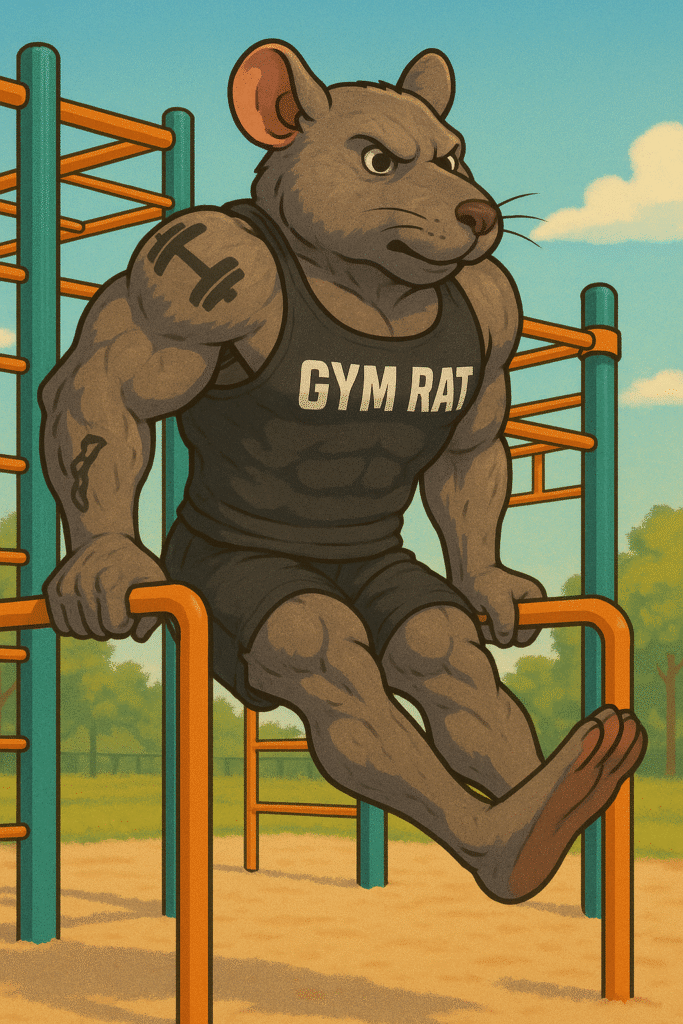
Essential Exercises on the Jungle Gym.
Exercises Targeting Different Muscle Groups.
The jungle gym gives you lots of ways to train your whole body. You can use the bars, steps, and even the ground around it to work different muscles. Pull-ups help your back, shoulders, and arms. Push-ups and dips work your chest and triceps. Squats and step-ups build your legs and glutes. It’s all possible in one outdoor space.
Your core muscles are also easy to train on the jungle gym. Hanging knee raises and leg lifts target your abs and hip flexors. These moves also improve balance and body control. Even climbing across monkey bars makes your core tighter and stronger. It keeps your middle muscles working the whole time.
With just a few simple moves, you can build a full-body calisthenics workout routine. Each day can focus on something different like upper body, lower body, or core. You can also combine them into one session. This makes it easy to stay strong, flexible, and healthy while using the jungle gym.
Since there are many ways to use each bar or bench, you can adjust exercises for any level. Beginners can use modified push-ups, while more advanced users can do one-arm rows. This flexibility makes workout routines for every person possible, no matter your strength level.
Step-by-Step Guide for Each Exercise.
Let’s break down some popular moves. Start with the pull-up. Grab the bar with both hands, palms facing away. Hang with arms straight, then pull your chin above the bar. Lower yourself slowly to the starting spot. If this is too hard, use a resistance band for support.
For dips, find parallel bars or two sturdy surfaces. Hold yourself up by locking your elbows. Slowly lower your body by bending your arms until your shoulders are even with your elbows. Then push back up to the top. Dips work your chest, shoulders, and triceps all at once.
To do hanging knee raises, hold a bar with your arms straight and legs hanging down. Tighten your core, then lift your knees up toward your chest. Pause, then lower slowly. This is a great move for abs and hip strength. Try not to swing your body for better control.
For bodyweight squats, stand near the jungle gym with feet shoulder-width apart. Bend your knees and lower your hips like you’re sitting in a chair. Keep your chest up and push through your heels to stand back up. Add a jump at the top to make it more challenging.
Safety Tips to Prevent Injury.
Staying safe is just as important as getting strong. Always warm up before starting your calisthenics workout routine. You can jog in place, do jumping jacks, or move your arms and legs gently. Warming up helps your body get ready and protects your joints from strain.
When using the jungle gym, check the bars and surfaces first. Make sure they aren’t wet, loose, or broken. Use both hands when climbing or hanging, and wear shoes with a good grip. These small steps help stop slips and falls. They also give you more control during each move.
Don’t rush your exercises. Move slowly and with good form. If something feels painful, stop and rest. Doing too much too fast can lead to sore muscles or injury. Instead, build strength over time and always listen to your body. It’s better to do a little well than too much with poor form.
It also helps to stretch after every session. Simple moves like touching your toes, shoulder rolls, or gentle lunges help your body cool down. This makes recovery easier and keeps your muscles from getting tight. With these tips, your workout routines for the jungle gym can be fun, safe, and full of progress.
Building Strength with Pull Exercises.
Features and Benefits of Pull-Up Variations.
Pull-ups are one of the best moves in any calisthenics workout routine. They work your back, shoulders, arms, and core all at once. Using the jungle gym bar, you can do many pull-up styles to build strength. You can even mix them into different workout routines for variety and fun.
There are many types of pull-ups, and each one targets your body in a new way. Standard pull-ups use an overhand grip and build upper back strength. Chin-ups use an underhand grip and focus more on your biceps. Wide-grip pull-ups are tougher and give more challenge to your shoulders and lats.
Doing different pull-up variations helps you avoid boredom. It also keeps your muscles working in new ways. That means you’ll keep getting stronger as you change it up. Over time, you’ll notice improvements in your posture, grip strength, and upper body control.
You can also use bands or jump to the bar if you’re still learning. Even holding yourself halfway up is a great start. These steps make pull-ups something anyone can work toward. Including variations keeps your calisthenics workout routine fresh and helps your body grow stronger from every angle.
Using Monkey Bars for Progressive Strength Gains.
Monkey bars aren’t just for swinging. They are a perfect part of workout routines for the jungle gym for building pulling strength. Moving hand over hand improves grip, arms, and shoulders. It also trains your core as you stay tight and steady while crossing.
Begin by just hanging from the bars. This builds grip and helps your body adjust to the weight. Once hanging feels easy, try going across one bar at a time. Keep your arms tight and use your core to stop from swinging too much. Over time, you’ll be able to move faster and more smoothly.
To make monkey bar work even harder, try skipping bars or going backwards. This adds more challenge and builds more power in your arms and back. You can also swing slowly or hold yourself between bars to increase time under tension. That helps muscles grow stronger.
Including monkey bars in your workout routines for pulling exercises keeps things fun and exciting. You won’t need machines or weights. Just using your body and the jungle gym, you can build serious strength. Plus, it feels more like play than work, which helps you stay consistent.
Incorporating Rows for Balanced Development.
Pulling exercises should always include rows. Rows help balance out push movements like push-ups and dips. Without them, your body can become uneven and lead to injury. Rows target your mid-back, arms, and posture muscles. They are an important part of a full calisthenics workout routine.
To do rows, find a low bar on the jungle gym. Lie underneath it and hold the bar with both hands. Keep your body straight like a plank and pull your chest up toward the bar. Lower yourself slowly. This move strengthens the upper back and teaches control.
If full body rows feel hard at first, bend your knees and use your feet for support. As you get stronger, try straight-leg rows and even feet-up rows. These versions increase difficulty while keeping your form sharp. Progress slowly to avoid overworking your joints.
Adding rows to your weekly calisthenics workout routine for pulling helps you stay balanced and strong. They protect your shoulders, improve your posture, and make other exercises feel easier. With just a little practice on the jungle gym, rows can become one of your favorite and most powerful moves.

Sculpting Your Core with Dynamic Moves.
Knee Raises and Leg Lifts on Bars
One of the best ways to build a strong core is by using the jungle gym for hanging moves. Knee raises and leg lifts help target your lower abs and hip muscles. These moves use your body weight and make your core work hard to stay steady. They are great to add to any calisthenics workout routine.
To start with knee raises, hang from a pull-up bar. Keep your arms straight and legs hanging down. Slowly lift your knees up toward your chest, then lower them back down. Go slow and try not to swing. As this gets easier, raise your legs higher for more challenge.
Next, you can try straight leg lifts. Keep your legs straight and lift them as high as you can. This move takes more control and works your full core. You can also try holding your legs up for a few seconds at the top. It adds even more power to your workout routines for abs and lower body strength.
Over time, you’ll feel your core getting tighter and stronger. These hanging moves also improve grip and posture. Practicing knee raises and leg lifts a few times each week builds great results. They are simple to learn, but they push your core like few other exercises.
Introducing Static Holds Like Planks and L-Sits
While movement exercises are helpful, static holds make your muscles work in a different way. These moves don’t involve movement—they test how long you can stay still. Planks and L-sits are perfect examples. You can use the jungle gym bars or the ground for both.
To do a plank, place your forearms on the ground and keep your body in a straight line. Hold this position while keeping your abs tight and your hips level. Try starting with 20 seconds and add more time as you get stronger. This is a great beginner move in any calisthenics workout routine.
L-sits are more advanced and use parallel bars or a flat bench. Sit on the bars and lift your legs straight in front of you. Keep them off the ground and your arms locked. Even if you can only hold for a few seconds, you are building serious core power. Add it to your calisthenics workout routines for a fun challenge.
Static holds make your core stay tight without rest. They also train your body to stay strong during other movements. Adding these holds helps your muscles build endurance. They’re a great way to finish your routine or use as a goal to work toward each week.
Balancing Core Training with Other Muscle Groups
Training your core is important, but it’s just one part of your body. To stay strong and safe, you must also train your arms, legs, back, and chest. That’s why full-body calisthenics workout routines for the jungle gym are so useful. They make it easy to balance your workouts while still targeting the core.
If you work only on your abs, you might get muscle imbalances. That can lead to poor posture or even injury. Instead, add core exercises in between push-ups, pull-ups, and squats. This keeps your whole body active while still sculpting your core. You’ll feel more stable and move better during every exercise.
Use the jungle gym to plan circuits that include both moving and holding exercises. For example, do a round with pull-ups, planks, dips, and knee raises. This keeps your training balanced and fun. Also, switching between muscle groups gives each part of your body time to rest while others work.
The best calisthenics workout routine uses both motion and control. Core moves like leg lifts help you build power, while planks and L-sits teach balance. Mix them together with total-body exercises to get the best results. That’s how you build a strong core and a strong body at the same time.
Mastering Push Workout Routines For Upper Body.
Calisthenics Workout Routine: Building Workout Routines For Triceps and Chest Strength.
Dips are one of the best upper body exercises in a calisthenics workout routine. They target your triceps, chest, and shoulders all at once. When done right, they can help you build strong arms and a powerful upper body. The jungle gym is a great place to do dips because many parks have parallel bars or low bars to use.
To start, hold onto two bars with your arms straight and your body lifted off the ground. Slowly bend your elbows and lower yourself until your upper arms are about even with your shoulders. Then, push yourself back up. Go slowly so you don’t hurt your joints. Keep your body straight and your elbows pointing back, not out to the sides.
If full dips are too hard, you can start with bench dips. Sit on a low bar or step, place your hands next to your hips, and move your feet out. Lower yourself down and push back up. This easier version helps you get used to the movement and build strength safely.
Over time, you’ll be able to do full dips with control. Adding dips into your calisthenics workout routine for upper body days will help your muscles grow and your strength increase. They’re simple, yet powerful, and you can do them anywhere you find the jungle gym.
Workout Routines For Pushing Exercises: Handstand Push-Ups, Regular Push-Ups.
Push-ups are a classic exercise that work your chest, shoulders, triceps, and core. They’re easy to do anywhere, and they don’t need any equipment. This makes them perfect for the jungle gym or any open space. You can start with knee push-ups and move up to harder versions as you get stronger.
To do a standard push-up, place your hands on the ground shoulder-width apart. Keep your body in a straight line, lower your chest toward the ground, and push back up. Make sure your elbows bend at an angle, not straight out. Doing 3 sets of 8–12 reps is a good goal for most people starting out.
Once regular push-ups feel easy, try elevated push-ups using the jungle gym. Place your feet on a bar or step and do push-ups from there. This version works your shoulders more. After that, you can practice handstand push-ups against a wall or sturdy bar. These are tougher but great for building strong shoulders and balance.
These pushing exercises fit into almost all calisthenics workout routine levels. Beginners use basic push-ups, while advanced users go for handstands and explosive push-ups. You can keep adding new moves as you improve, and each one helps shape your upper body more.
Progression Techniques to Advance to More Difficult Moves.
Progressing in workout routines for calisthenics means starting simple and slowly making things harder. That way, your body can get stronger without getting hurt. For example, if push-ups are easy, try diamond push-ups or archer push-ups. These versions focus more on triceps and shoulder control.
You can also use time-based goals to improve. Try holding the bottom of a push-up for five seconds before pushing back up. This makes your muscles work harder even with the same move. Time under tension is a smart trick in many calisthenics workout routine styles.
Adding reps is another way to grow. If you can do 10 push-ups easily, aim for 12 or 15 next week. Small steps lead to big changes over time. You can also slow down each rep to feel your muscles work more. Slower moves often mean stronger results.
Lastly, don’t forget workout routines for calisthenics you need to mix in rest. Rest days help your muscles heal and grow. If you train hard every day, your body can get tired and stop improving. Balance training, rest, and smart progress keep your body safe and help you get the most out of the jungle gym.
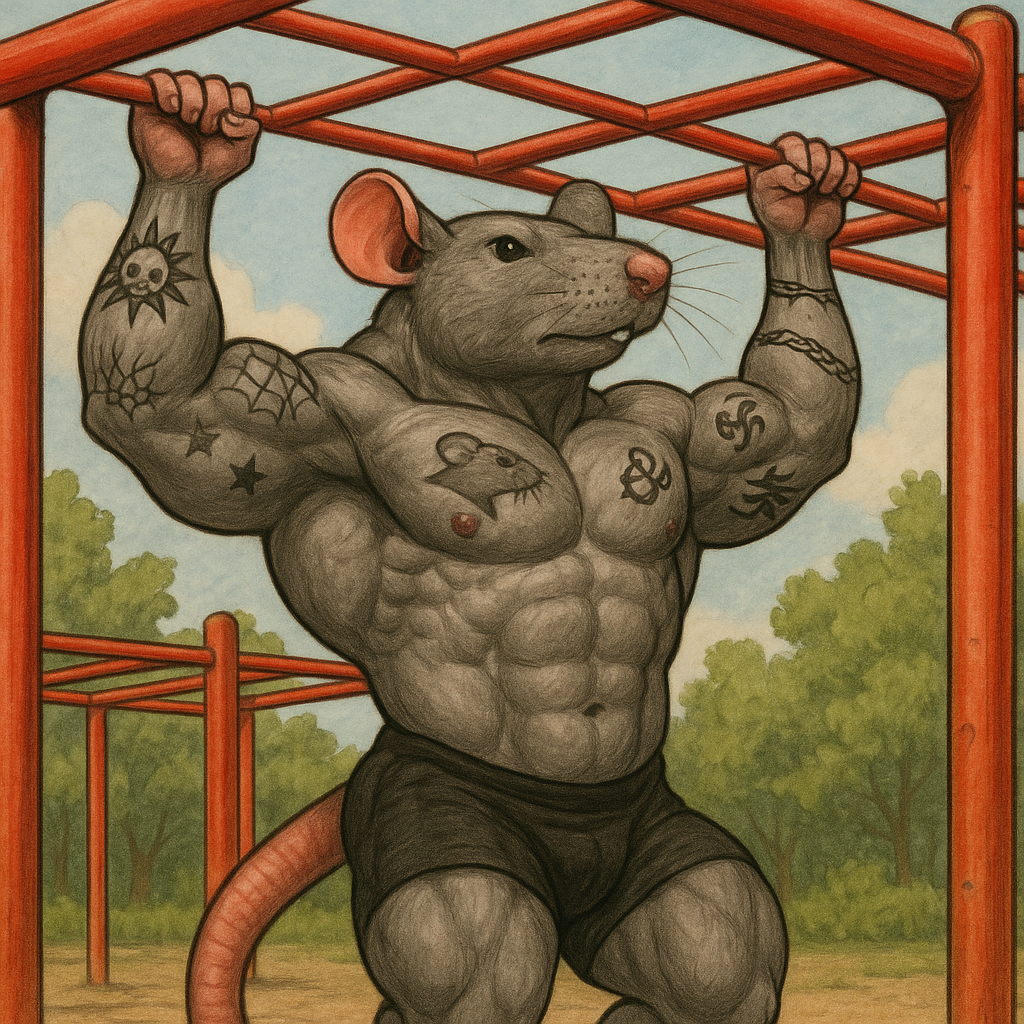
Exploring Functional Flexibility and Balance.
Importance of Mobility and Flexibility.
Flexibility helps your body move without pain or tightness. When you stretch more often, your muscles get longer and looser. This makes it easier to bend, twist, or reach. Flexibility also keeps you safe when doing moves in a calisthenics workout routine, especially at the jungle gym where your body moves in many directions.
Mobility is just as important in a calisthenics workout routine. It means how well your joints move. Good mobility helps you squat lower, lift your legs higher, and hold better positions. It helps your movements feel smooth, not stiff. Without it, exercises like dips or leg raises can feel harder or even unsafe.
Both flexibility and mobility help you perform better. You can do more advanced skills when your body moves freely. When you stretch often, your muscles recover faster and feel less sore. That’s why smart workout routines for the outdoors include stretching, even if just for a few minutes.
In time, you’ll notice that your body feels better during and after workouts. It becomes easier to jump, hang, squat, or balance. A flexible and mobile body lets you enjoy more moves on the jungle gym, and helps you avoid injuries that stop your progress.
Creative Balance Exercises on Uneven Surfaces.
Training balance is fun and helpful at the jungle gym. It makes your muscles work together to stay steady. When you balance well, your posture gets better too. This helps in almost every sport or activity. You can even turn balance moves into games that challenge your body and brain.
Try walking across a low bar or beam to start. Keep your arms out wide and look ahead, not down. You can also stand on one foot on a step or bench. To make it harder, close your eyes or reach your arms overhead. These small tricks train your legs, hips, and core all at once.
Another great move is a slow-motion step-up. Place one foot on a bench, then rise slowly and balance before stepping back down. Use your arms for balance and go slow to stay controlled. This exercise helps your legs grow stronger and your balance improve with time.
Uneven ground around the jungle gym can be used too. Try doing lunges or squats on a grassy slope. It forces your body to adjust and stay balanced. These creative moves fit well into workout routines for people who want strength and stability at the same time.
Incorporating Dynamic Stretches into Routines.
Dynamic stretches are active movements that stretch your muscles while you move. Unlike regular stretches where you hold still, these keep your body moving. You can do them before any calisthenics workout routine to wake up your muscles and prepare for exercise. They help you warm up safely and get loose.
Start with moves like arm circles, leg swings, or hip circles. These only take a few minutes but do a lot for your body. They raise your heart rate and help blood flow to your muscles. This means your body is more ready for pull-ups, push-ups, or climbing across the jungle gym.
Try adding walking lunges with a twist or high knees to your warm-up. These moves stretch your legs and core while also building control. You can use them at the start of any workout to feel more ready and avoid injuries. They’re simple but give your muscles the attention they need.
When you make dynamic stretching part of your routine, you feel better during your workout. Your movements become smoother and your body responds faster. That’s why smart workout routines for the outdoors always include warm-ups with stretches. They help you move better and get stronger every time.
Conclusion: Cultivating a Lifelong Fitness Habit.
Encouraging Consistency in Outdoor Calisthenics Workout Routine.
One of the most important parts of staying fit is being consistent. That means showing up for your workouts again and again, even on days you don’t feel like it. Training outside with Workout routines for the jungle gym makes exercise easier because it’s fun and feels different from a normal gym. You can breathe fresh air, enjoy the sun, and move freely.
The best way to stay consistent is to make a schedule. Choose a few days each week to follow your calisthenics workout routine. Keep it simple and don’t worry about being perfect. Doing a little bit often works better than doing too much once in a while. As long as you keep showing up, your body will grow stronger.
Outdoor workouts also let you enjoy nature while you exercise. Parks are free, open spaces that offer different settings and surfaces to train on. You can run, jump, hang, and climb all in one spot. Workout routines for the jungle gym help you stay active while keeping things interesting.
If you miss a day, don’t give up. Just pick up where you left off. Some weeks will be better than others, and that’s okay. What matters most is that you don’t stop. When you make movement part of your routine, fitness becomes a normal and fun part of your life.
Setting Long-Term Fitness Goals Using Calisthenics Workout Routine.
Setting goals gives your training purpose. Instead of just exercising, you start working toward something exciting. Maybe you want to do your first pull-up or master a full L-sit. Using workout routines for the jungle gym, you can chase all kinds of fun and challenging goals with your own body weight.
It helps to set both short and long-term goals. A short-term goal might be holding a plank for one minute. A longer goal could be completing 10 pull-ups in a row. With a good calisthenics workout routine, you can track your progress and feel proud every step of the way.
Write your goals down or say them out loud. Keep track of what you do each week. Small improvements matter and build up fast. When you hit a goal, celebrate it. Then, set a new one to keep going. This gives you direction and makes your workouts more meaningful.
You don’t need fancy tools to reach big goals. All you need is your body, time, and a little space at the jungle gym. With patience and effort, workout routines for all levels can lead to amazing results. Over time, you’ll see changes not just in your body, but in your confidence too.
Cultivating Mental Resilience and Enjoying Fitness Adventures
Getting fit isn’t just about muscles. It’s also about building a strong mind. When you train outside, sometimes the weather is hot, or a move feels hard. But when you keep going, you build mental strength. This helps in workouts and in life. A tough day becomes a chance to grow.
Pushing through challenges makes you braver and more focused. If you fall or fail at a move, try again. Every mistake teaches you something. That’s part of what makes calisthenics workout routine training special. It shows you that you are strong enough to improve, one step at a time.
Using the jungle gym turns fitness into an adventure. You can train in new parks, try new moves, or bring a friend to join you. Each session becomes an experience you enjoy, not just a chore. When fitness is fun, you’ll want to keep doing it for years.
In the end, it’s not just about looking fit. It’s about feeling strong, confident, and happy. When you stay consistent, set goals, and enjoy your training, you create a lifelong habit. With every visit to the jungle gym, your body and your mindset grow together. That’s the true power of smart workout routines for life.








